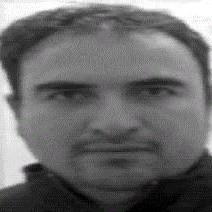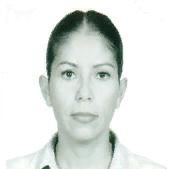International Journal of Image, Graphics and Signal Processing (IJIGSP)
IJIGSP Vol. 9, No. 1, 8 Jan. 2017
Cover page and Table of Contents: PDF (size: 638KB)
Super Resolution of PET Images using Hybrid Regularization
Full Text (PDF, 638KB), PP.1-9
Views: 0 Downloads: 0
Author(s)
Index Terms
Super-resolution, PET, total variation
Abstract
Positron emission tomography images are used to diagnose, staggering, and monitoring several diseases like cancer and Alzheimer, also, this technique is used in clinical research to help to assess the therapeutic and toxic effects of drugs. However, a main drawback of this modality is the poor spatial resolution due to limiting factors such as positron range, instrumentation limits and the allowable doses of radiotracer for administration to patients. These factors also lead to low signal to noise ratios in the images. In this paper, we proposed to increment the resolution of the image and reduce noise by implementing a super resolution scheme, we proposed to use a hybrid regularization consisting of a TV term plus a Tikhonov term to solve the problem of low resolution and heavy noise. By using an anatomical driven scheme to balance between regularization terms we attain a better resolution image with preservation of small structures like lesions and reduced noise without blurring the edges of images. Experimental results and comparisons with other methods of the state-of-the-art show that our proposed scheme produces better preservation of details without adding artifacts when the resolution factor is increased.
Cite This Paper
Jose Mejia, Boris Mederos, Liliana Avelar-Sosa, Leticia Ortega Maynez,"Super Resolution of PET Images using Hybrid Regularization", International Journal of Image, Graphics and Signal Processing(IJIGSP), Vol.9, No.1, pp.1-9, 2017. DOI: 10.5815/ijigsp.2017.01.01
Reference
[1]Van Paesschen, W., Dupont, P., Sunaert, S., Goffin, K., & Van Laere, K. The use of SPECT and PET in routine clinical practice in epilepsy. Current opinion in neurology, 20(2), 194-202, 2007.
[2]J. Langner, F. Hofheinz, B. Beuthien-Baumann, J. van den Hoff, Locally Adaptive Filtering for Edge Preserving Noise Reduction on Images with Low SNR in PET, Nuclear Science Symposium and Medical Imaging Conference, pp. 3102-3104, 2011.
[3]W. Stefan, K. Chen, H. Guo, R. Renaut, S. Roudenko, Wavelet-based de-noising of Positron Emission Tomography Scans, Journal of Scientific Computing, vol. 50, pp. 665-677, 2012.
[4]Wernick, Miles N., and John N. Aarsvold. Emission tomography: the fundamentals of PET and SPECT. Academic Press, 2004.
[5]J. Kennedy, O. Israel, A. Frenkel, R. Bar-Shalom, H. Azhari, et al., Super-resolution in pet imaging, IEEE Transactions on Medical Imaging, 25 (2), 2006, 137-147.
[6]M. Irani, S. Peleg, Motion analysis for image enhancement: Resolution, occlusion, and transparency, Journal of Visual Communication and Image Representation 4 (4), 324-335, 1993.
[7]K. Y. Jeong, J. H. Kim, K. M. Kim, J. B. Ra, Sinogram super-resolution using a space-variant blur matrix in pet, IEEE Transactions on Nuclear Science, 60 (1), 2013, 158-165.
[8]Y. Li, S. Matej, S. D. Metzler, Image reconstructions from super-sampled data sets with resolution modeling in pet imaging, Medical physics 41 (12), 2014.
[9]S. Villena, M. Vega, S. D. Babacan, R. Molina, A. K. Katsaggelos, Bayesian combination of sparse and non-sparse priors in image super resolution, Digital Signal Processing 23 (2), 530-541, 2013.
[10]Y. Li, S. Matej, S. D. Metzler, Image reconstructions from super-sampled data sets with resolution modeling in pet imaging, Medical physics 41 (12), 2014.
[11]A. Dagher, C. Thompson, Real-time data rebinning in pet to obtain uniformly sampled projections, Nuclear Science, IEEE Transactions on 32 (1), 811-817, 1985.
[12]Z. Cho, K. Hong, J. Ra, S. Lee, S. Hilal, J. Correll, A new sampling scheme for the ring positron camera: Dichotomic ring sampling, Nuclear Science, IEEE Transactions on 28 (1), 1981, 94-98.
[13]G. Chang, T. Pan, J. W. Clark Jr, O. R. Mawlawi, Optimization of super-resolution processing using incomplete image sets in pet imaging, Medical physics 35 (12), 5748-5757, 2008.
[14]Liu, K., Tan, J., & Su, B. An adaptive image denoising model based on tikhonov and tv regularizations. Advances in Multimedia, 2014.
[15]Pang, Z.-F., Wang, L.-L., & Yang, Y.-F. The proximal point method for a hybrid model in image restoration. arXiv preprint arXiv:1110.1804, 2011.
[16]Babacan, S. Derin, Rafael Molina, and Aggelos K. Katsaggelos. "Total variation super resolution using a variational approach." 2008 15th IEEE International Conference on Image Processing. IEEE, 2008.
[17]Zomet, Assaf, Alex Rav-Acha, and Shmuel Peleg. "Robust super-resolution." Computer Vision and Pattern Recognition, 2001. CVPR 2001. Proceedings of the 2001 IEEE Computer Society Conference on. Vol. 1. IEEE, 2001.
[18]Harrison, R. L. & Lewellen, T. K. The simset program. Monte Carlo Calculations in Nuclear Medicine: Applications in Diagnostic Imaging, 87, 2012.
[19]Wang, Z., Bovik, A. C., Sheikh, H. R., & Simoncelli, E. P. Image quality assessment: from error visibility to structural similarity. IEEE transactions on image processing, 13(4), 600-612, 2004
[20]B. Dogdas, D. Stout, A. Chatziioannou, RM Leahy, Digimouse: A 3D Whole Body Mouse Atlas from CT and Cryosection Data, Phys. Med. Bio, 52: 577-587, 2007. http://dx.doi.org/10.1088%2F0031-9155%2F52%2F3%2F003
[21]C. Chan, R. Fulton, D.D. Feng, S. Meikle, Median non-local means filtering for low SNR image denoising: Application to PET with anatomical knowledge,Nuclear Science Symposium Conference 2010, pp. 3613-3618, 2010.
[22]Farsiu, S., Robinson, M. D., Elad, M., & Milanfar, P. Fast and robust multiframe super resolution. IEEE transactions on image processing, 13(10), 1327-1344, 2004.
[23]Wahl, Richard L., ed. Principles and practice of positron emission tomography. Lippincott Williams & Wilkins, 2002.
[24]Rudin, Leonid I., Stanley Osher, and Emad Fatemi. "Nonlinear total variation based noise removal algorithms." Physica D: Nonlinear Phenomena 60(1), 259-268, 1992.
[25]Chambolle, A., Caselles, V., Cremers, D., Novaga, M., & Pock, T. An introduction to total variation for image analysis. Theoretical foundations and numerical methods for sparse recovery, 9(263-340), 2010.
[26]Beck, Amir, and Marc Teboulle. "Fast gradient-based algorithms for constrained total variation image denoising and deblurring problems." IEEE Transactions on Image Processing 18.11, 2419-2434, 2009.
[27]Bendriem, Bernard, and David W. Townsend, eds. The theory and practice of 3D PET. Vol. 32. Springer Science & Business Media, 2013.
[28]Lynch, T. B. PET/CT in clinical practice. Springer Science & Business Media, 2007.
[29]Sampat, Mehul P., et al. "Complex wavelet structural similarity: A new image similarity index." IEEE transactions on image processing 18, 2385-2401, 2009.
[30]Mohamed, B., Yassine, H., Abdelmouneim, M. L., Bassou, A., & Abdelmalik, T. A. A Comparative Study between X_Lets Family for Image Denoising. International Journal of Image, Graphics and Signal Processing, 6(3), 43, 2014.
[31]Ibrahem, Hani M. An Efficient Switching Filter Based on Cubic B-Spline for Removal of Salt-and-Pepper Noise. International Journal of Image, Graphics and Signal Processing, vol. 6, no 5, p. 45, 2014.



